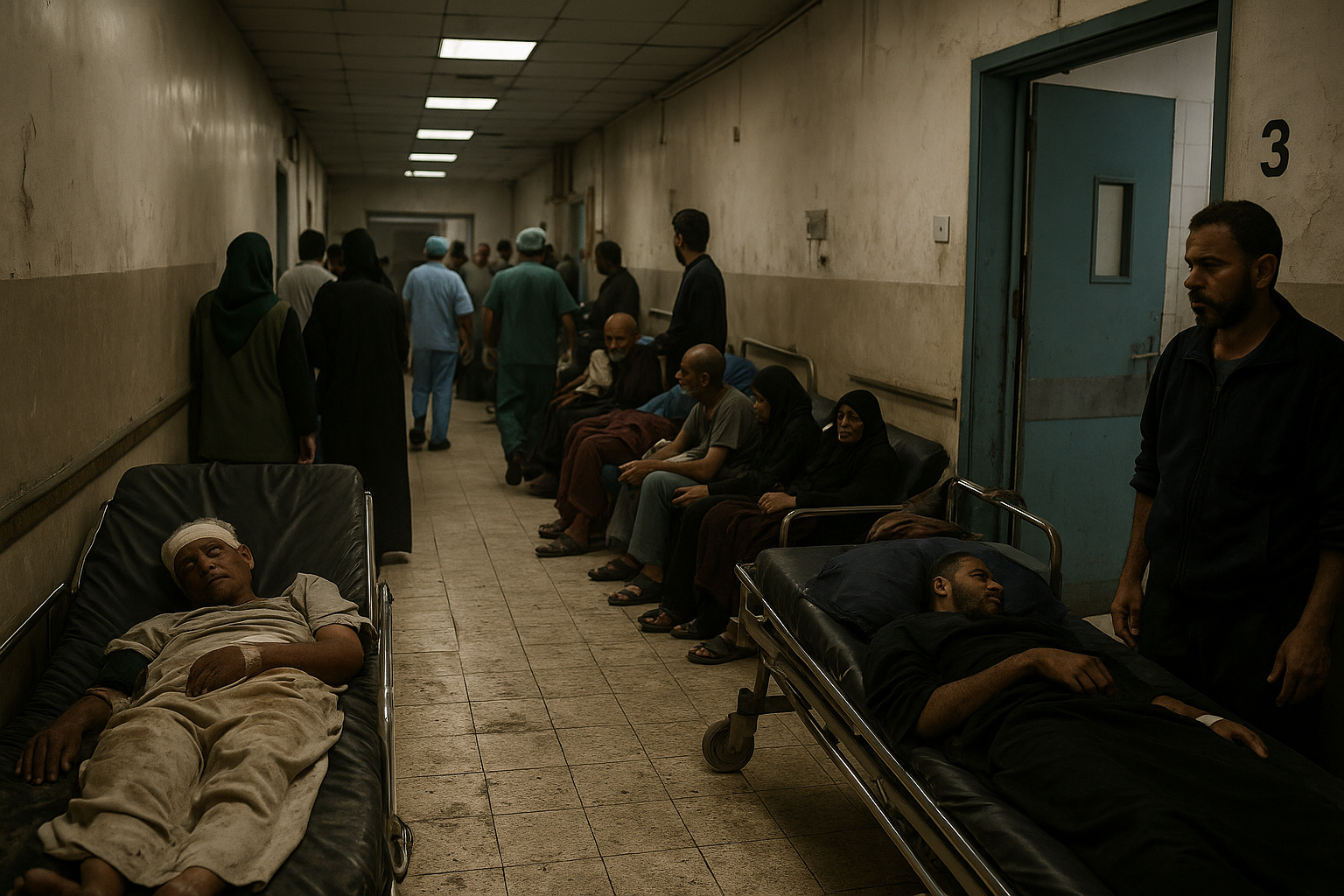Global Civilian Deaths in Conflict Soared 40% in 2024, UN Reports Warn
The past two years have been particularly brutal for women and children caught in conflict zones. Between 2023 and 2024, nearly four times as many women and children were killed compared to 2021–2022.

In a sobering assessment of the global human rights landscape, the UN Human Rights Office has reported a dramatic 40% rise in civilian deaths in armed conflicts during 2024, along with a sharp escalation in discrimination and lethal attacks on human rights defenders and journalists.
The data, described by UN High Commissioner for Human Rights Volker Türk as "stories behind every statistic," paints a bleak picture of the international community’s failure to protect the most vulnerable amid growing geopolitical instability and authoritarian repression.
At least 48,384 individuals were killed last year, most of them civilians. Particularly grim was the targeted violence against human rights defenders, with 625 victims (502 killed and 123 disappeared). This deadly environment unfolded as discrimination and inequality reached new extremes across every continent.
“Behind every data point, a person,” said Türk. “These numbers represent individual lives and stories. They reveal deep failures to protect the vulnerable, and they cry out for urgent action.”
Human Rights Defenders and Journalists: A Deadly Year
Every 14 hours, a human rights defender, journalist, or trade unionist was killed or forcibly disappeared in 2024. These violent patterns occurred across a wide range of countries and contexts, underscoring the increasingly hostile climate for civic activism and free expression.
-
Journalist deaths rose 10%, from 74 in 2023 to 82 in 2024.
-
Over 60% of journalist killings occurred in conflict zones—the highest proportion in more than a decade.
-
Latin America and the Caribbean had the highest proportion of countries (80%) with recorded killings of human rights defenders.
-
Firearms were the most frequently used weapon in these killings globally.
Women human rights defenders faced unique and regionalized risks. While women constituted only 10% of those killed, they represented 20% of disappearances—a figure that surged to 50% in Latin America, the Caribbean, Europe, and Northern America.
Discrimination: A Compounding and Widespread Crisis
One in five people globally reported experiencing some form of discrimination, with the data revealing how intersectional factors—such as gender, disability, age, ethnicity, and poverty—compound vulnerability.
Key findings include:
-
Nearly 28% of people with disabilities reported discrimination, compared to 17% of those without disabilities.
-
Women faced gender-based discrimination at more than double the rate of men.
-
Younger individuals (15–29) experienced discrimination based on migration status, ethnicity, religion, and sexual orientation.
-
Older adults (60+) faced discrimination mainly based on age, disability, and health status.
-
Discrimination was most acute among the poorest households, reinforcing cycles of inequality and social exclusion.
“Discrimination doesn’t exist in isolation,” Türk warned. “It is systemic, compounded, and perpetuates vulnerability and exclusion.”
Devastating Toll on Women and Children in Conflict
The past two years have been particularly brutal for women and children caught in conflict zones. Between 2023 and 2024, nearly four times as many women and children were killed compared to 2021–2022.
-
21,480 women and 16,690 children were killed in conflicts in the past two years.
-
Gaza accounted for 80% of child deaths and 70% of women’s deaths recorded globally.
These figures signal a dramatic escalation of civilian targeting and raise urgent questions about compliance with international humanitarian law in modern warfare.
Progress Amid the Gloom: Institutions and Data Are Growing Stronger
Despite the dire statistics, the report also highlights some encouraging developments in institutional capacity and data collection:
-
Over half the world’s population is now covered by independent National Human Rights Institutions (NHRIs).
-
The number of countries with such institutions nearly tripled, from 32 in 2000 to 89 in 2024.
-
Discrimination is now systematically measured in 119 countries, up from just 15 in 2015.
-
32% of accredited NHRIs now track data on attacks against human rights defenders.
These advancements are crucial for monitoring, advocacy, and accountability, especially in holding governments and non-state actors responsible for violations and enabling victims' access to justice.
A Call for Urgent, Coordinated Global Action
The data was collected using an internationally agreed methodology, verified by independent sources, and compiled under the Sustainable Development Goals (SDGs) framework—particularly SDG 16 (Peace, Justice, and Strong Institutions) and SDG 10 (Reduced Inequalities). The report reflects conditions in over 190 countries, offering the most comprehensive human rights snapshot in recent years.
Türk emphasized that data alone is not enough—it must drive action.
“Accountability begins with visibility,” he said. “But awareness must translate into action—from States, from civil society, and from the international community. The world cannot afford to normalize these levels of violence and exclusion.”
As geopolitical instability, economic inequality, and digital surveillance continue to intersect with authoritarian governance, the UN Human Rights Office urges states and stakeholders to reverse these trends and recommit to the protection of human rights for all.
ALSO READ
Ceasefire Demand and Humanitarian Crisis in Gaza: UN's Urgent Resolution Vote
UN Security Council Faces US Veto on Gaza Ceasefire Resolution
Desperate Race for Aid in Gaza Amid Deadly Clashes
Humanitarian Crisis in Gaza: Aid Distribution Amid Escalating Violence
Ceasefire Crisis: Aid Suspended Amid Gaza Turmoil










